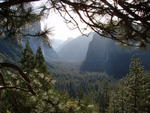Seismicity
During March 2014, the University of Utah reports 277 earthquakes were located in the Yellowstone National Park region. More events will be added as the University of Utah Seismograph Stations, responsible for the operation and analysis of the Yellowstone Seismic Network, processes the remaining March events. The largest event was a light earthquake of magnitude 4.7 on March 30, at 06:34 AM MDT, located four miles north-northeast of Norris Geyser Basin in Yellowstone National Park, Wyoming. The M4.7 main shock was reported felt in Yellowstone National Park, in the towns of Gardiner and West Yellowstone, Montana and throughout the region. This is the largest earthquake at Yellowstone since the early 1980s. Initial source analysis of the M4.7 earthquake suggests a tectonic origin (mostly strike-slip motion).
March 2014 seismicity was dominated by two earthquake clusters in the Norris Geyser Basin region and are described below.
1) A north-south trending series of earthquakes, over seven miles in length, began in September, 2013 and persisted throughout March with 130 events. The largest earthquake (magnitude 3.5) occurred on March 26, at 05:59 PM MDT, located 13 miles south-southwest of Mammoth, WY.
2) The earthquake series containing the March 30 magnitude 4.7 event began on March 27 and continues into April. At the end of March the series consisted of 70 located earthquakes, including the largest earthquake of the month, four magnitude 3 earthquakes, and numerous magnitude 2 and smaller earthquakes.
Earthquake sequences like these are common and account for roughly 50% of the total seismicity in the Yellowstone region.
Yellowstone earthquake activity in March is elevated compared with typical background levels.
Ground deformation
The ground deformation occurring in north-central Yellowstone continues. Since August 1, 2013, the NRWY GPS station has moved about 1.5 cm east, 2 cm north, and 5.5 cm up.
Further south, the caldera subsidence, which began in 2010, has ceased. Since the beginning of 2014, the caldera has been slowly rising at a rate of about 2 cm/yr. All the deformation currently occurring in Yellowstone remains well within historical norms.
The Yellowstone GPS network recorded no deformation associated with the March 30, 2014 M4.7 earthquake. Earthquakes of this size and depth do not typically produce ground displacements large enough to detect with GPS.
Other
The GPS field crew at Yellowstone has traveled around the Park over the past week and has not observed any effects from the earthquake. If any subtle changes have occurred, they are most likely to be found after the snow melts.
YVO's real time temperature data in Norris Geyser Basin indicate no significant changes to the thermal features that are monitored.(http://volcanoes.usgs.gov/volcanoes/yellowstone/yellowstone_monitoring_32.html)
The Yellowstone Volcano Observatory (YVO) provides long-term monitoring of volcanic and earthquake activity in the Yellowstone National Park region. Yellowstone is the site of the largest and most diverse collection of natural thermal features in the world and the first National Park. YVO is one of the five USGS Volcano Observatories that monitor volcanoes within the United States for science and public safety.
YVO Member agencies: USGS, Yellowstone National Park, University of Utah, University of Wyoming, UNAVCO, Inc., Wyoming State Geological Survey, Montana Bureau of Mines and Geology, Idaho Geological Survey
Yellowstone Monthly Update issued Apr 1, 2014
All posts are those of the individual authors and the owner
of this site does not endorse them. Content should be considered opinion
and not fact until verified independently.
Sorry, only registered users may post in this forum.


